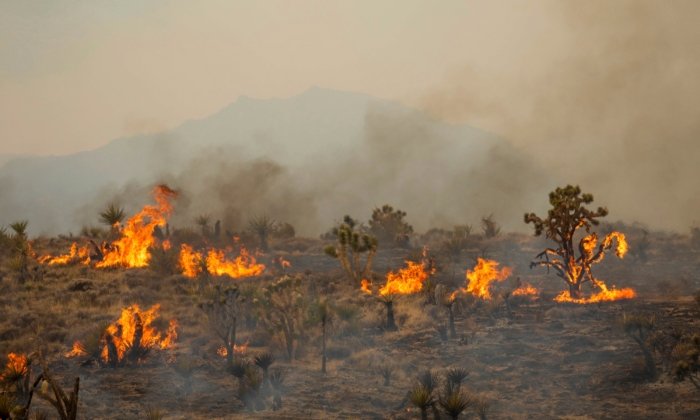Scientist Admits Manipulating Data in Paper to Align with Top Journal’s Climate Change Narrative
A study on California’s wildfires, which has been widely cited by mainstream media since its publication in Nature, is missing key facts deliberately left out to fit the scientific journal’s preferred narrative of climate change, the paper’s leading author said.
Using a machine learning model, the researchers analyzed nearly 18,000 fires that ignited in California between 2003 and 2020 and found that rising temperatures boosted the overall frequency of extreme daily wildfire growth by an average of 25 percent.
While there are other equally, if not more, important factors driving up risks extreme fire, such as poor forest management and the increasing number of people who start wildfires either by accident or on purpose, Mr. Brown said he chose not to discuss them so that the paper remained in line with the mainstream narrative.
“Did I know that including them would make for a more realistic and useful analysis? I did. But I also knew that it would detract from the clean narrative centered on the negative impact of climate change and thus decrease the odds that the paper would pass muster with Nature’s editors and reviewers.”
Three Unspoken Rules
According to Mr. Brown, the first thing an “astute climate researcher” must know is that his or her work should support the mainstream narrative.
This narrative holds that the effects of climate change are “both pervasive and catastrophic,” and that the best strategy to address it is through massive government-subsidized programs aimed at reducing greenhouse gas emissions, rather than adaptation measures that could make people less vulnerable to the impacts of the changes, such as more resilient infrastructure and more air conditioning, or better forest management to prevent wildfires.
“To put it bluntly, climate science has become less about understanding the complexities of the world and more about serving as a kind of Cassandra, urgently warning the public about the dangers of climate change,” Mr. Brown wrote. “However understandable this instinct may be, it distorts a great deal of climate science research, misinforms the public, and most importantly, makes practical solutions more difficult to achieve.”
“To acknowledge this would imply that the world has succeeded in some areas despite climate change—which, the thinking goes, would undermine the motivation for emissions reductions,” the climate scientist wrote.
The third rule, according to Mr. Brown, is to use metrics that will produce the most eye-popping numbers.
In the California wildfire paper, the researchers looked into the risk of wildfires burning more than 10
Source link






